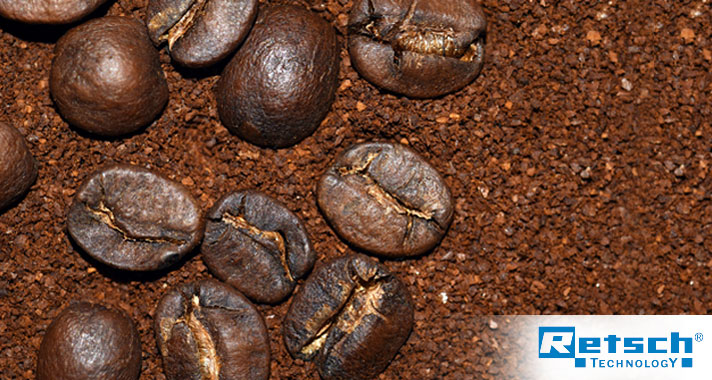Espresso powder is much finer (d50~250μm) than coffee powder for filtered coffee (d50~500μm).
Particle size and shape analysis of espresso powder and other foodstuffs such as baby formulas
Different types of coffee require different fineness:
Espresso powder for example is much finer (d50~250μm) than coffee powder used to prepare filtered coffee (d50~500μm). By detecting the real image of individual particles, the result can be calculated based on particle width, length or equal area diameter.
Particle characterisation
Particle characterisation by Dynamic Image Analysis (DIA) has become increasingly popular in recent years. This technique delivers very accurate particle size distributions in a very short time, is virtually maintenance-free and, unlike other methods like sieve analysis or laser diffraction, provides particle shape information.
The following materials can conveniently be analysed:
- Ground coffee
- Salt
- Spices
- Nutraceuticals
- Flavours
- Food additives (vitamins, citric acid, sorbates, sulphites, sweeteners etc…)
- Baby Food
- Animal Food
- Flour
- Formula (Baby Food)
- Milk Powder
Wide measurement range – effective dispersion
To achieve excellent measurement results for fine particles, efficient dispersion and powerful high-resolution optics are essential. The RETSCH CAMSIZER X2 offers three alternative options for dispersion: air-jet dispersion of fine powders, free-fall measurement of fragile particles, and a wet unit for suspensions. The instrument can be adapted to the required mode of operation within a few seconds.
The patented optical system features two ultra-bright LED light sources and two high resolution CCD cameras. This dual-camera technology ensures that one camera detects fine particles with great accuracy whereas the other camera will focus on the large particles. Thus, the CAMSIZER X2 achieves a wider measurement range than any other image analyser. With more than 300 images analysed per second, the result is based on the characterisation of hundreds of thousands or even millions of individual particles. One measurement typically takes only 1 to 3 minutes.
Dynamic Image Analysis
Dynamic Image Analysis with the CAMSIZER X2 provides all relevant data on particle size and shape. Compared to other techniques like laser diffraction or (electron or optical) microscopy, the measurement data are based on a larger number of particles and are therefore statistically more relevant and have better repeatability. One measurement only takes 1 to 3 minutes, allowing for high sample throughput and continuous quality control. The CAMSIZER X2 is therefore suited for accurate and reproducible characterisation of a great variety of different materials.









